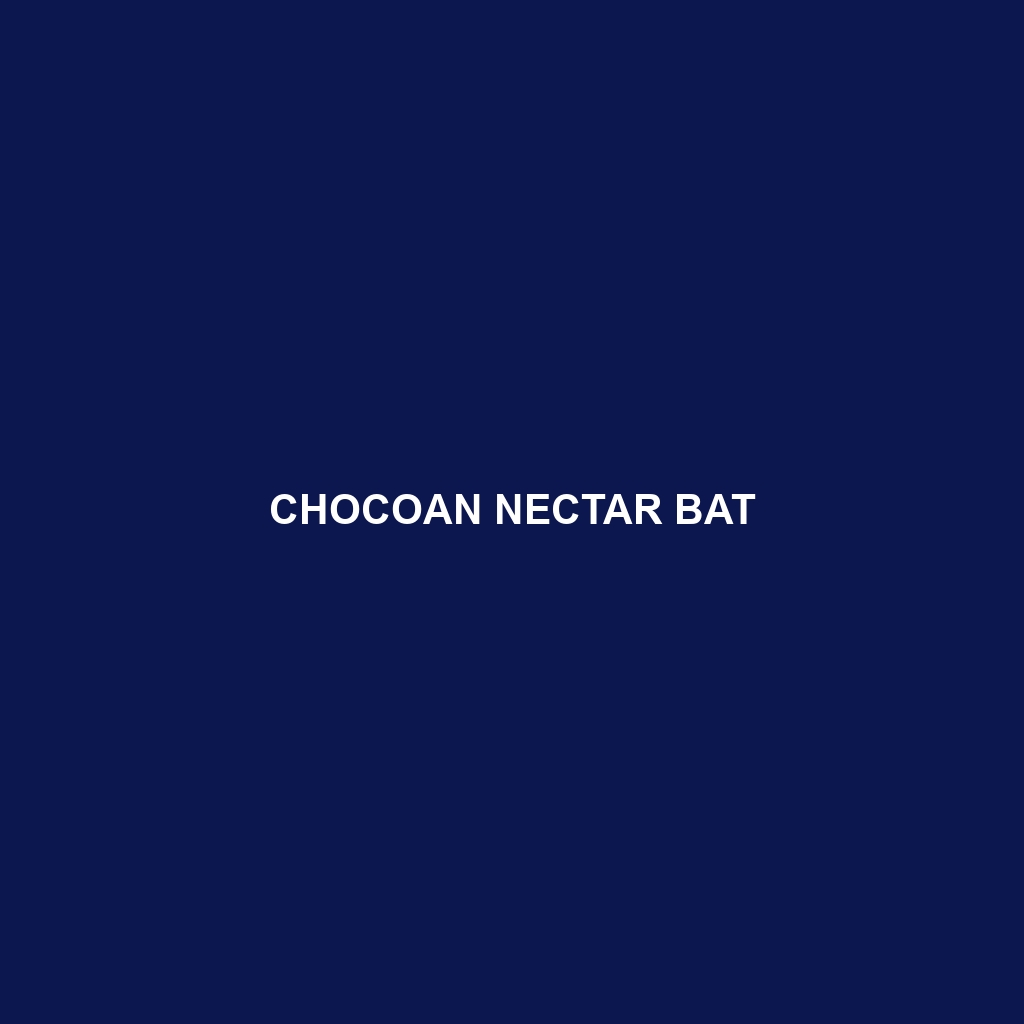Bokermann’s Nectar Bat
Common Name: Bokermann’s Nectar Bat
Scientific Name: Lonchophylla bokermanni
Habitat
Bokermann’s Nectar Bat is primarily found in the tropical forests of Brazil, particularly in the Atlantic Forest region. This species thrives in humid environments that provide an abundance of flowering plants, essential for their feeding habits. They are often spotted in areas with dense foliage, where they can easily access nectar-rich flowers.
Physical Characteristics
Bokermann’s Nectar Bat typically measures around 8-10 cm in body length, with a wingspan of approximately 25-30 cm. Their fur is soft and often exhibits a golden-brown coloration, with lighter underparts. One distinctive feature of this bat is their long snout, specially adapted for reaching deep into floral tubes to extract nectar. Additionally, they have elongated tongue, which can be an intriguing characteristic for bat enthusiasts.
Behavior
This species is predominantly nocturnal, engaging in foraging activities at night when flowers are fully open. Bokermann’s Nectar Bat is known for its agile flight and remarkable echolocation abilities, which assist in navigating through dense vegetation. They exhibit social behaviors, often roosting in small groups, and are known for their elaborate courtship displays during mating season.
Diet
The diet of Bokermann’s Nectar Bat primarily consists of nectar from various flowers, particularly those of the families Fabaceae and Myrtaceae. They play a crucial role in pollination, and their feeding habits contribute significantly to the ecosystem. In addition to nectar, they may consume pollen and small insects, making them important players in their habitat’s food web.
Reproduction
Bokermann’s Nectar Bat typically breeds once a year, with the mating season occurring between November and December. After a gestation period of approximately three months, females give birth to a single pup. Mothers nurse their young for several weeks, providing them with the essential nutrients needed for survival. During this period, communal roosting is common, offering protection from predators.
Conservation Status
Currently, Bokermann’s Nectar Bat is classified as ‘Vulnerable’ by the IUCN Red List. Habitat destruction due to deforestation and urbanization poses a significant threat to their populations. Conservation efforts are critical to preserve their natural habitats and ensure the survival of this unique bat species.
Interesting Facts
Bokermann’s Nectar Bat is often referred to as a “flying fox” due to its large size among nectar bats. They have been observed engaging in intricate social grooming behaviors, which help to strengthen bonds within their groups. Additionally, this species has a remarkably high metabolic rate, which is vital for their energetic foraging activities.
Role in Ecosystem
Bokermann’s Nectar Bat plays an essential role in pollinating a variety of flowers, contributing to the biodiversity of the rainforest. Their feeding habits help in the reproduction of plants, which in turn supports a myriad of other species within the ecosystem. By facilitating plant reproduction, they maintain the balance of their habitat, proving to be an indispensable part of the rainforest’s ecological network.
